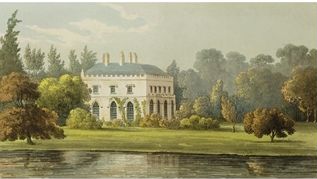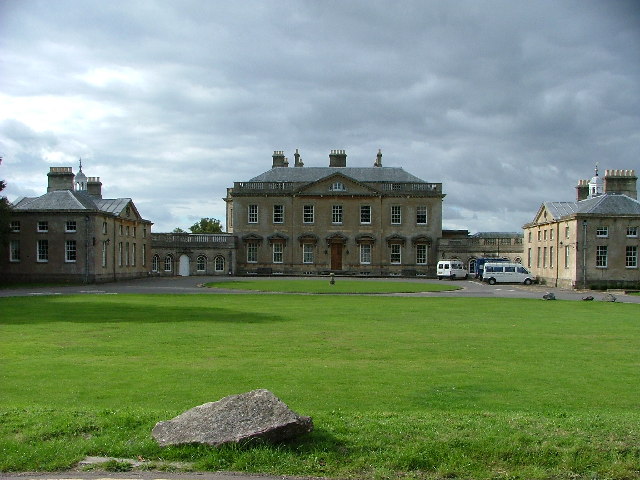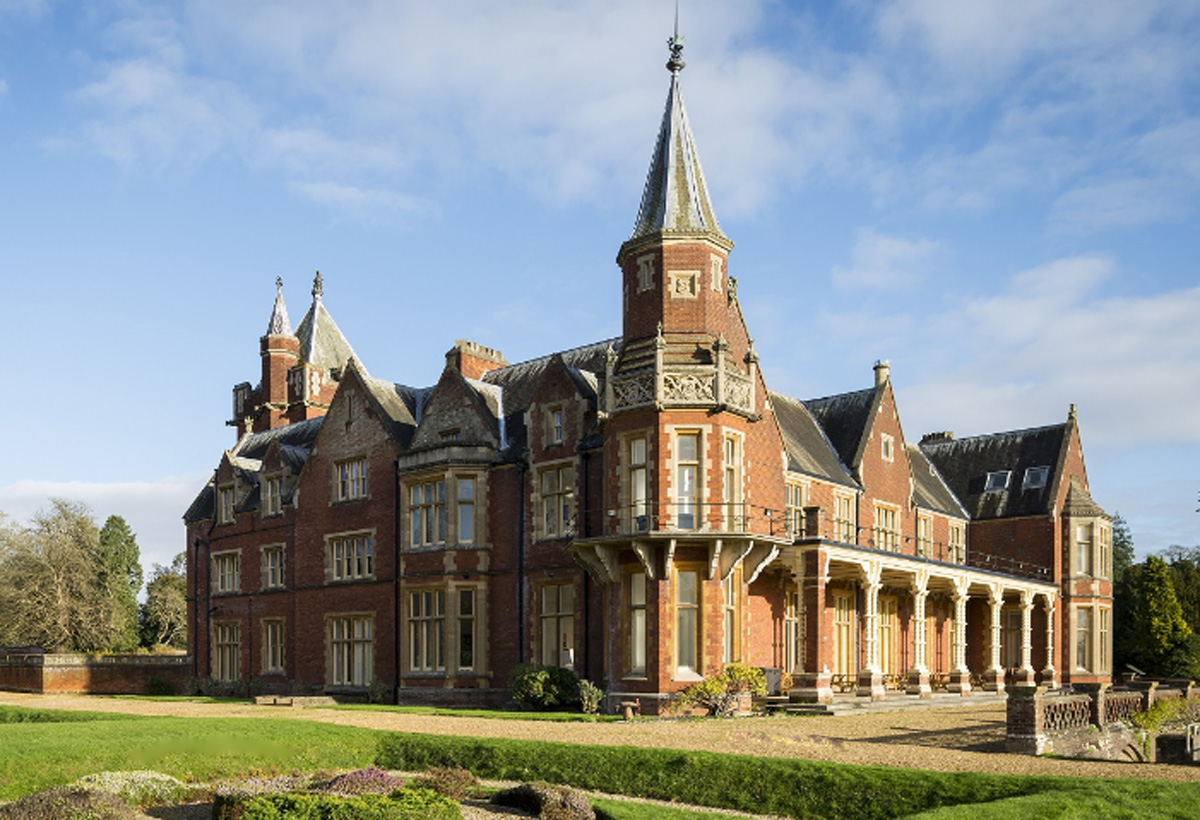|
Stiff Leadbetter
Stiff Leadbetter (c.1705–18 August 1766) was a British architect and builder, one of the most successful architect–builders of the 1750s and 1760s, working for many leading aristocratic families. Career Leadbetter's career began when he was apprenticed as a carpenter in 1719, and he worked for the next decade or so as a journeyman carpenter. By 1731 he had settled in Eton, marrying Elizabeth Hill (born c.1709), daughter of a London timber merchant; and he worked as carpenter to Eton College from 1740. Leadbetter leased Eton College Wharf as his principal home and workshop from 1744. He was employed as a builder in his own right by the 1740s, and in the following two decades he worked both as a designer but primarily as a builder of many new country houses, hospitals and speculative urban development. In 1756 Leadbetter was appointed as Surveyor of the Fabric of St Paul's Cathedral, and through this position also gained many ecclesiastical commissions. Many of his building ... [...More Info...] [...Related Items...] OR: [Wikipedia] [Google] [Baidu] |
Newton Park
Newton Park is an 18th-century Grade I listed country house in the parish of Newton St Loe, Somerset, England, situated west of Bath. History Newton Park was built in 1762–5 by Joseph Langton (grandson of Joseph Langton (c.1637–1719), of Newton Park, Member of Parliament for Bath from 1690 to 1695,) to the design of Stiff Leadbetter. Newton Park was the ancestral home of the women's rights campaigner Lady Anna and M.P. William Henry Powell Gore-Langton (1824 1873). The house was used as a Red Cross hospital to house Australian and New Zealand troops in World War I. Newton Park is currently home to the administrative staff of Bath Spa University Grounds and park The estate includes a landscaped park, near the village of Newton St Loe, designed by Capability Brown, and now owned by the Duchy of Cornwall. It was laid out on land containing the 14th century keep and gateway of St Loe's Castle, a fortified medieval manor house, Elizabethan farm buildings, and various enc ... [...More Info...] [...Related Items...] OR: [Wikipedia] [Google] [Baidu] |
Fulham Palace
Fulham Palace, in Fulham, London, previously in the former English county of Middlesex, is a Grade I listed building with medieval origins and was formerly the principal residence of the Bishop of London. The site was the country home of the bishops from the 11th century until 1973. Though still owned by the Church of England, the palace, managed by the Fulham Palace Trust (registered charity 1140088) houses a number of restored historic rooms and a museum documenting its long history. The property resides next to Bishops Park and contains a large botanic garden. The palace garden is ranked Grade II* on the Register of Historic Parks and Gardens. The Palace is open daily and is free to visit. According to figures released by the Fulham Palace Trust, over 390,000 people visited Fulham Palace in 2015/2016. History Origins Prehistoric (6000 BC–AD 43) Evidence of prehistoric activity dating from the late Mesolithic and early Neolithic age was uncovered by various archaeologic ... [...More Info...] [...Related Items...] OR: [Wikipedia] [Google] [Baidu] |
Sir John Elwill, 4th Baronet
Sir John Elwill, 4th Baronet (died 1 March 1778) was an English aristocrat and politician. He was the only son of Sir Edmund Elwill, 3rd Baronet, and his wife Anne Speke, daughter of William Speke, of Beauchamp, Somerset. The third baronet was Comptroller of the Excise; he inherited the baronetcy from his childless elder brother Sir John Elwill, 2nd Baronet, on the latter's death on 10 September 1727.Cokayne, George Edward (1906) Complete Baronetage'. Volume V. Exeter: W. Pollard & Co. . p. 9 The fourth baronet inherited the Elwill baronetcy on his father's death on 2 February 1740. He was elected Member of Parliament in the Parliament of Great Britain for Guildford in the 1747 British general election and held the seat over three parliaments until 1768. He married Selina, Lady Ranelagh, on 30 November 1755 at West Dean. She was the widow of Arthur Cole, 1st Baron Ranelagh, and the daughter of Peter Bathurst, of Clarendon Park, Wiltshire. Her mother, Bathurst's second wife La ... [...More Info...] [...Related Items...] OR: [Wikipedia] [Google] [Baidu] |
Englefield Green
Englefield Green is a large village in the Borough of Runnymede, Surrey, England, approximately west of central London. It is home to Royal Holloway, University of London. The village grew from a hamlet in the 19th century, when much of Egham ( to the east) was sold by the Crown Estate. History The village grew from a hamlet and medieval farmed swathe of land, known as a tithing, of the same name, combined with was a much wider, that is eastern tranche of its area associated with the former Great South West Road and its neighbouring land known as ''Egham Hill'', both in Egham in the 19th century, when much of its land, principally in the western half, was parted with by sale from the Great Park in the Crown Estate. Parts of it in the west remain Crown Estate, mainly the entire south-east quarter of the Great Park (that non-built-up land seen in the map, shown, which is not in neighbouring Berkshire). The last duel in England The last fatal duel in England took place on Pries ... [...More Info...] [...Related Items...] OR: [Wikipedia] [Google] [Baidu] |
Castle Hill, Englefield Green
Castle Hill (originally known as Elvill's) is a large late-18th-century or early-19th-century Grade II listed mansion in Englefield Green, Surrey. The estate totaled 33 acres in 2012, it had previously stood at 108 acres at the time of its 1863 sale. It was designed by Stiff Leadbetter for Sir John Elwill, 4th Baronet and built between 1758 and 1763. The estate was bought by the banker George C. Raphael in the late 19th century. It was purchased by the Ugland Marine Insurance Company in the 1990s. It is presently owned by a foreign royal family. In addition to the main house, the entrance gates, bothy A bothy is a basic shelter, usually left unlocked and available for anyone to use free of charge. It was also a term for basic accommodation, usually for gardeners or other workers on an estate. Bothies are found in remote mountainous areas of Sco ..., stable block, and dairy are all individually Grade II listed. References {{Reflist Buildings by Stiff Leadbetter Country hous ... [...More Info...] [...Related Items...] OR: [Wikipedia] [Google] [Baidu] |
Robert Lee, 4th Earl Of Lichfield
Robert Lee, 4th Earl of Lichfield (1706–1776) was an English politician and peer, the last of the Earls of Lichfield. Birth and origins Robert was born on 3 July 1706 in St. James Street, Westminster, London. He was one of the ten children and the youngest of the sons of Edward Henry Lee, 1st Earl of Lichfield, Edward Henry Lee and his wife Charlotte Lee, Countess of Lichfield, Charlotte FitzRoy. His father was created the 1st Earl of Lichfield just before his marriage. Robert's mother was a natural daughter of Charles II of England, Charles II and Barbara Villiers. Early life Lee was Member of Parliament, MP for Oxford (UK Parliament constituency), Oxford from 1754 to 1768, and considered a Tory. Lee held the sinecure position of Custos Brevium of the Court of Common Pleas, in the royal gift. Marriage On 29 May 1745, at St Paul's Cathedral, London, Lee married Catherine Stonhouse (1708–1784), daughter of Sir John Stonhouse, 3r ... [...More Info...] [...Related Items...] OR: [Wikipedia] [Google] [Baidu] |
Charlbury
Charlbury () is a town and civil parish in the Evenlode Evenlode is a village and civil parish ( ONS Code 23UC051) in the Cotswold District of eastern Gloucestershire in England. Evenlode is bordered by the Gloucestershire parishes of Moreton-in-Marsh to the northwest, Longborough and Donnington to ... valley, about north of Witney in the West Oxfordshire district of Oxfordshire, England. It is on the edge of Wychwood, Wychwood Forest and the Cotswolds. The United Kingdom Census 2011, 2011 Census recorded the parish's population as 2,830. Place name Toponymy, Toponymic evidence suggests that Charlbury was an Anglo-Saxons, Anglo-Saxon settlement from an early date, and may be associated with 'Faerpinga in Middelenglum' listed in the Tribal Hidage of the 7th to 9th centuries. The name is a compound of two Old English elements. ''Burh'' is a fortified place. ''Ceorl'' (probably pronounced ) is a "freeman of the lowest class", but other sources suggest it was also a personal ... [...More Info...] [...Related Items...] OR: [Wikipedia] [Google] [Baidu] |
Ditchley
Ditchley Park is a country house near Charlbury in Oxfordshire, England. The estate was once the site of a Roman villa. Later it became a royal hunting ground, and then the property of Sir Henry Lee of Ditchley. The 2nd Earl of Lichfield built the present house, designed by James Gibbs, in 1722. In 1933, the house was bought by an MP, Ronald Tree, whose wife Nancy Lancaster redecorated it in partnership with Sibyl Colefax. During the Second World War Winston Churchill used the house as a weekend retreat, due to concerns that his official country house, Chequers and his private country home, Chartwell, were vulnerable to enemy attack. After the war, Tree sold the house and estate to the 7th Earl of Wilton, who then sold it in 1953 to Sir David Wills of the Wills tobacco family. Wills established the Ditchley Foundation for the promotion of international relations and subsequently donated the house to the governing trust. Ditchley is a Grade I listed building. The park is li ... [...More Info...] [...Related Items...] OR: [Wikipedia] [Google] [Baidu] |
William Bentinck, 2nd Duke Of Portland
William Bentinck, 2nd Duke of Portland (1 March 1709 – 1 May 1762), styled Viscount Woodstock from 1709 to 1716 and Marquess of Titchfield from 1716 to 1726, was a British peer and politician. Portland was the son of Henry Bentinck, 1st Duke of Portland and his wife Elizabeth Noel, daughter of Wriothesley Baptist Noel, 2nd Earl of Gainsborough. He succeeded his father in the dukedom as a teen in 1726. He was an original governor of the Foundling Hospital in London, founded in 1739, and was made a Knight of the Garter in 1741. On 11 June 1734, he married Lady Margaret Harley, daughter of Edward Harley, 2nd Earl of Oxford and Earl Mortimer. They had six children: * Lady Elizabeth Bentinck (Welbeck Abbey, 27 June 1735 – 25 December 1825, London), who married Thomas Thynne, 1st Marquess of Bath (1734–1796) * Lady Henrietta Bentinck (8 February 1737 – 4 June 1827), who married George Grey, 5th Earl of Stamford''Burkes Peerage'' (1939 edition), s.v. Stamford. (1737� ... [...More Info...] [...Related Items...] OR: [Wikipedia] [Google] [Baidu] |
Gerrards Cross
Gerrards Cross is a town and civil parish in south Buckinghamshire, England, separated from the London Borough of Hillingdon at Harefield by Denham, south of Chalfont St Peter and north bordering villages of Fulmer, Hedgerley, Iver Heath and Stoke Poges. It spans foothills of the Chiltern Hills and land on the right bank of the River Misbourne. It is west-north-west of Charing Cross, central London. Bulstrode Park Camp was an Iron Age fortified encampment. The town has a railway station on the Chiltern Main Line with regular services to London. Fast train takes 19 minutes to Marylebone. The town is close to M25 motorway and the M40 motorway runs beside woodland on its southern boundary. In 2014, a major national surveying company named Gerrards Cross as the most sought-after and expensive commuter town or village in their London Hot 100 report, with an average sale price of £1,000,000. History The town name is new compared with the great bulk of English towns. Gerrards Cro ... [...More Info...] [...Related Items...] OR: [Wikipedia] [Google] [Baidu] |
Bulstrode Park
Bulstrode is an English country house and its large park, located to the southwest of Gerrards Cross, Buckinghamshire. The estate spreads across Chalfont St Peter, Gerrards Cross and Fulmer, and predates the Norman conquest. Its name may originate from the Anglo-Saxon words ''burh'' (marsh) and ''stród'' (fort). The park and garden is designated a Grade II* listed building. First house The original house was built for the infamous Judge Jeffreys in 1686. It was sold to Hans William Bentinck, 1st Earl of Portland, who made it one of his principal residences and died there in 1709. In the 1740s, the architect and builder Stiff Leadbetter altered the house significantly for the 2nd Duke of Portland. The 3rd Duke commissioned further re-modellings and additions, including the castellated West Wing, to the designs of James Wyatt, between 1806 and 1809. Margaret Bentinck, the wife of the 2nd Duke used the house to accommodate her natural history and antiquities collection, with th ... [...More Info...] [...Related Items...] OR: [Wikipedia] [Google] [Baidu] |






